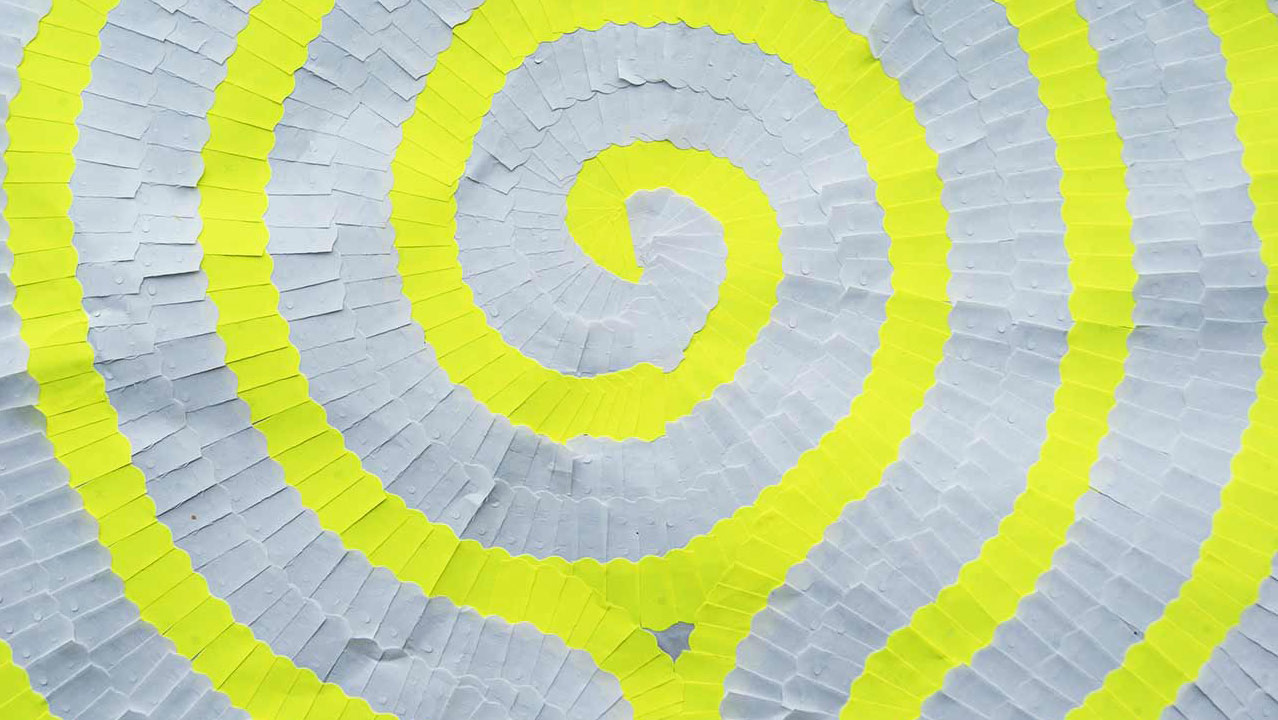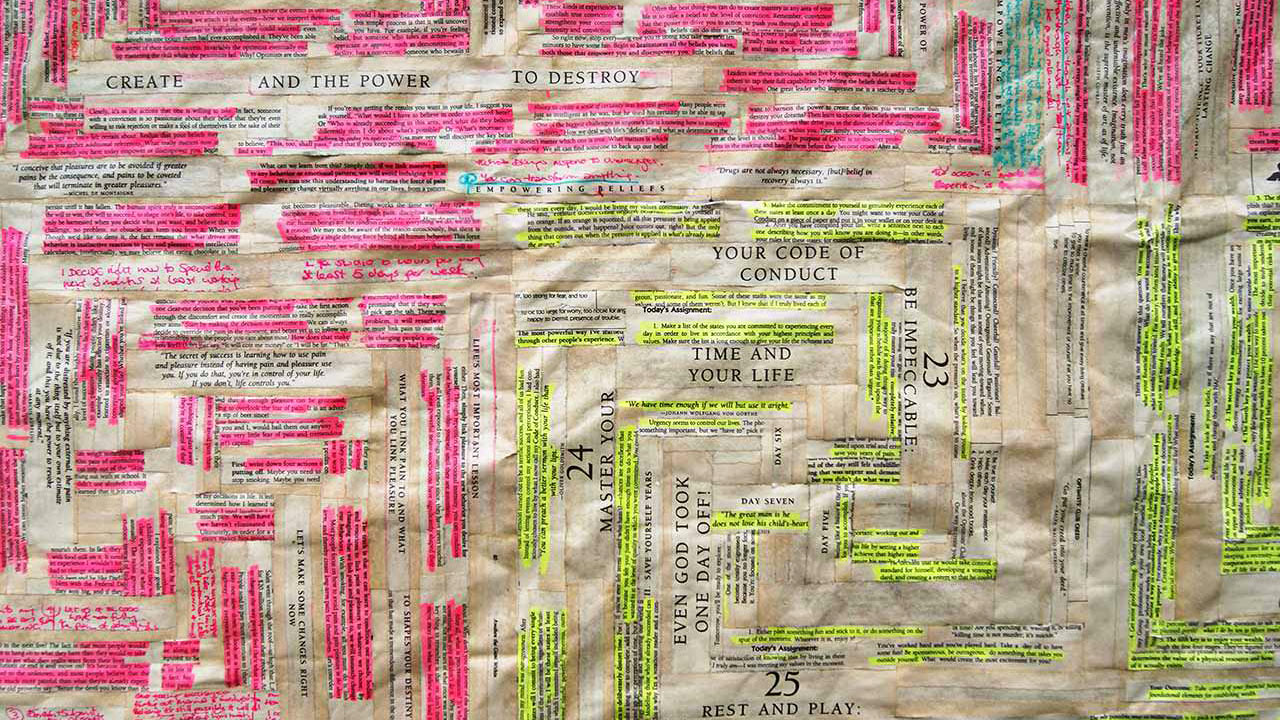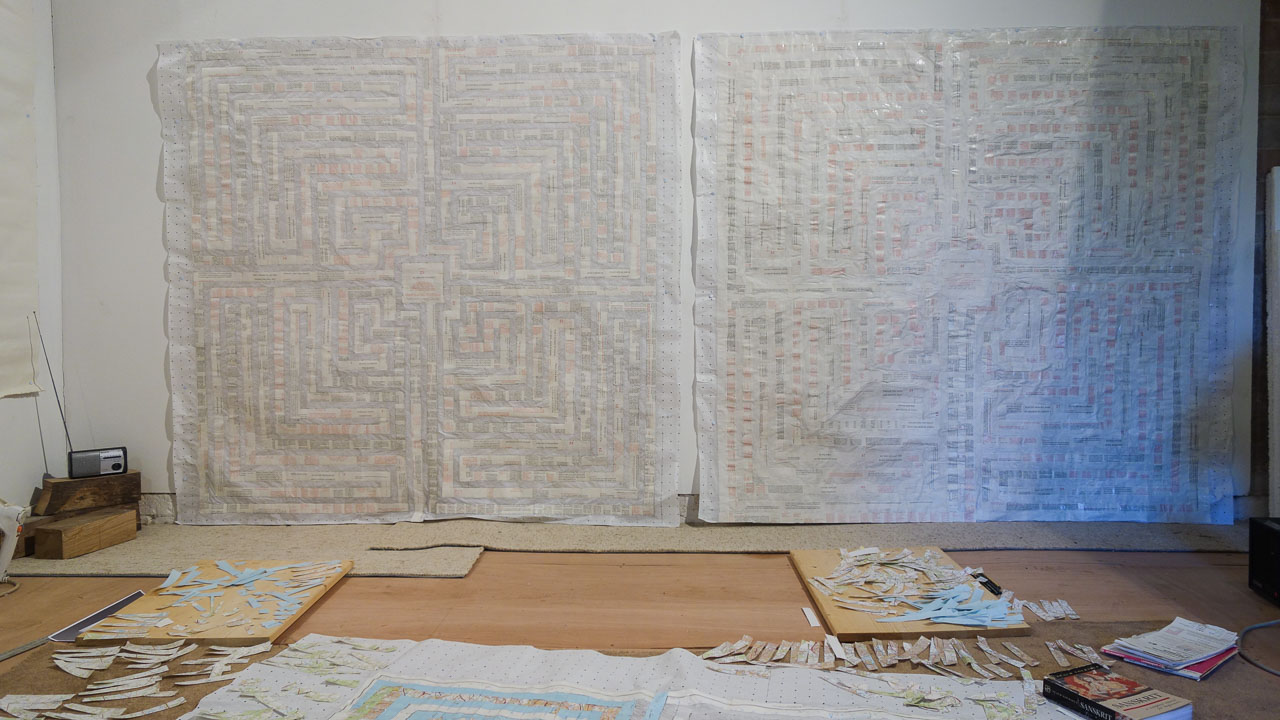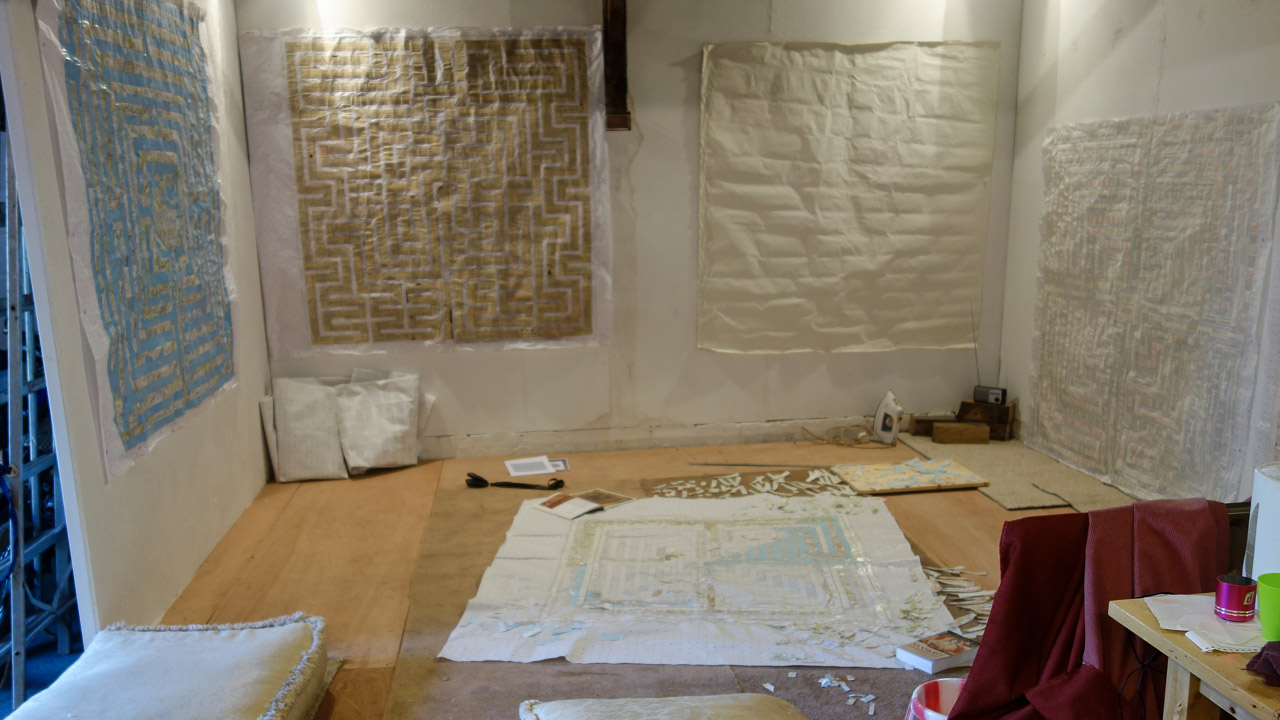No Shortcuts?
A continuation of a slight obsession with labyrinths and mazes, this collection of work was selected for inclusion in a small monograph booklet for an exhibition in Austria in 2013 (download it below):
A true labyrinth is distinct from a maze because there is only one path to the centre. Ancient 5-path and 7-path labyrinths consist of a single path with 5 or 7 changes of direction along the way. The good thing is, you can’t get lost.
With a labyrinth, though, there simply are no shortcuts.
Questions & Reflections
I have Sig Lonegren’s book “Labyrinths, Ancient Myths and Modern Uses“, where he shows how a labyrinth can be used as a contemplative self-help tool. Ponder on any question that’s troubling you before you enter, then at each turn of the labyrinth frame the question in a different way. When you reach the centre, reflect and rest a while, then on your return journey, again see the question in a different light at each turn on the path.

‘Das Indische Labyrinth’ (The Indian Labyrinth), detail – adhesive labels, paper, fabric, 112 x 112 cm, 2013
Self-help Tools
In the label piece above, I used a circular Indian labyrinth design and colours not usually associated with contemplation – neon yellow and plain white labels on a red velvet surround. The labyrinth holds strong though and the centre holds its own.
- Can any labyrinth be used as a tool?
- What if I made a labyrinth from a self-help or how to book – would it be more helpful than the original book or rendered useless in the act of reworking it?
- How complex or simple could the labyrinth be and still work?
- Are there any shortcuts?
I took Tony Robbins’ book on a (long) train trip from London to the Maastricht Art Fair, and along the way I highlighted the sentences, phrases and gems of wisdom I would want to remember. When I broke the book down to use with a labyrinth, I just took the highlighted parts and ignored the rest.
- Is the resulting labyrinth more useful as a contemplative tool?

‘Awaken the Giant Within’, (detail), Greek meander maze pattern, book pages on paper, 170 x 149 cm, 2013
48 Laws
Seemingly more complex, but still based on a single-path labyrinth design, the two largest pieces in this series are made from the pages of “The 48 Laws of Power“ – a fascinating book on how to succeed out there in the world by Robert Greene. The pages are laid out in chapter order and the book is long, so they cover two 6ft square panels which are mirror images of each other connected by a (very long) path.

Walking the Pathway
If you walk this path right through to Rule 48 at the goal of the right hand panel, you’ll take many more turns than on a basic 7-path labyrinth.
- Will that clear your thinking or just muddle it?
- Will you lose yourself in the distractions of all the advice on offer?
- How much can you take in?
- Will you stay the path?
- Or will you, like many of us, naturally look for a shortcut?

